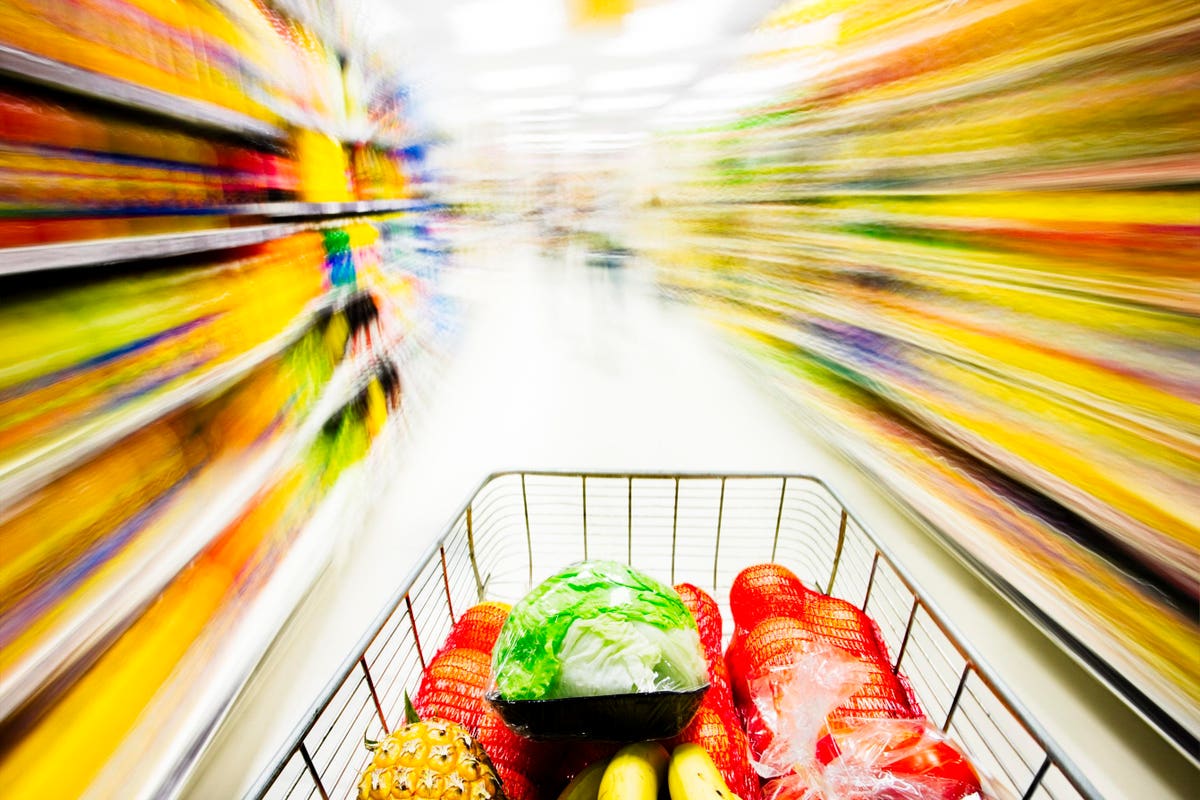Unless they rehab their products, food companies face a tipping point that will erode their cash cows.
Supermarket center aisles used to be comfy blue-chip neighborhoods for canned goods, snack food, cereal and other packaged necessities. But no longer.
Prices are still too high. Consumers are fleeing to cheaper private labels, often conveniently located right next door to their brand-name cousins. The nutritional labels of traditional brands are flunking inspections by health-conscious Gen Zs, who are saying “no thanks” and decamping for better-for-you options in the fresh foods aisle. And foods declared by public health advocates as ultra-processed are becoming persona non grata.
Without a major rehab, the trouble will only continue for Big Food. The upshot is that food companies need to adapt and innovate in order to protect (and grow) their traditional domain in center store aisles.
Let’s explore the key reasons contributing to this brewing storm and how food companies can weather it.
One problem is that prices are still too high. Recently it was reported that PepsiCo
PEP
KO
The result has been a drop or flattening in sales volume, as inflation-strapped shoppers try to keep their costs in line. Some of this decline is coming from consumer flight to store brands. According to the Private Label Manufacturers Association, in 2022 one out of every five grocery products sold across the US was a private label brand. These items are growing at nearly twice the rate of traditional packaged food brands, primarily due to the perception of better value and comparable quality.
Price will continue to be a concern, especially with younger consumers, who according to a Deloitte study say they are living paycheck to paycheck. If Big Food continues to hold its ground on higher prices, this migration to cheaper options will continue and consumers may stay away permanently even after prices moderate.
Another vulnerability for the food industry concerns one of their core raisons d’etre – many convenience foods and beverages, like chips, sodas and sweet baked goods, are ultra-processed (UPFs). These mainstays of the center aisle have been singled out by new studies as culprits contributing to the overconsumption of low-nutrition quality foods. Some studies have associated UPFs with depression, cardiovascular disease, and all-cause mortality. On top of that, health-conscious consumers are increasingly scrutinizing the ingredient labels and nutritional profiles of processed and ultra-processed foods and shifting toward whole foods, organic options, and cleaner labels. Concerns about additives, excessive sugar, and unhealthy fats have led to a growing skepticism towards these products. As a result, Big Food companies are grappling with the need to reformulate their offerings and align them with evolving dietary trends.
Long-term, this trend is not going away, because Generation Z — the young and influential demographic born between the mid-1990s and early 2010s — is reshaping the food industry. This group is known for being less brand loyal and highly focused on health and sustainability. They demand products that align with their society-oriented values, such as diversity, ethically sourced foods, and environmentally friendly options. In fact, 70 percent of Gen Zers say that sustainability in food production factors into which products they buy.
Big Food may see these problems as intractable. If they’re smart, they’ll see it as an opportunity to rehab their portfolios and take advantage of consumer trends that are here to stay. Here’s what they can do:
- Disappoint Wall Street (for a little bit). Raising prices at the expense of losing market share has long term implications for brand health. Those higher margins will become more difficult to sustain as additional promotional dollars are required to chip back at market share losses. Companies should lower prices to win back consumers who have strayed (and make grocers happier).
- Make “better-for-you” the new “convenience.” Food companies are wizards at designing great tasting products. Just as the post World War II era jumpstarted the popularity of processed foods, where consumers embraced their convenience, today’s food companies need to take the next step and automatically build-in better-for-you aspects. Benchmarking performance on improving the nutrition profile of their food products, like Unilever and Nestle have adopted, would go a long way to blunting attacks against processed and ultra-processed foods.
- Adopt the Gen Z consumer. Gen Z is poised to overturn the way the food industry operates. It is crucial that food companies tangibly demonstrate that their brand values align with Gen Z expectations. To secure the loyalty of these consumers, marketers must walk their talk and incorporate Gen Z values like sustainability and health into brand offerings at affordable prices.
Rising prices, changing consumer preferences, and a shift towards health and sustainability represent an inflection point — an opportunity for the food industry to adapt and emerge stronger, more relevant, and better positioned for the future. The center supermarket aisles are not what they used to be. But like a rundown house with good bones, established food companies can make themselves wildly attractive once again — but only if they’re willing to do the work.
Read the full article here





